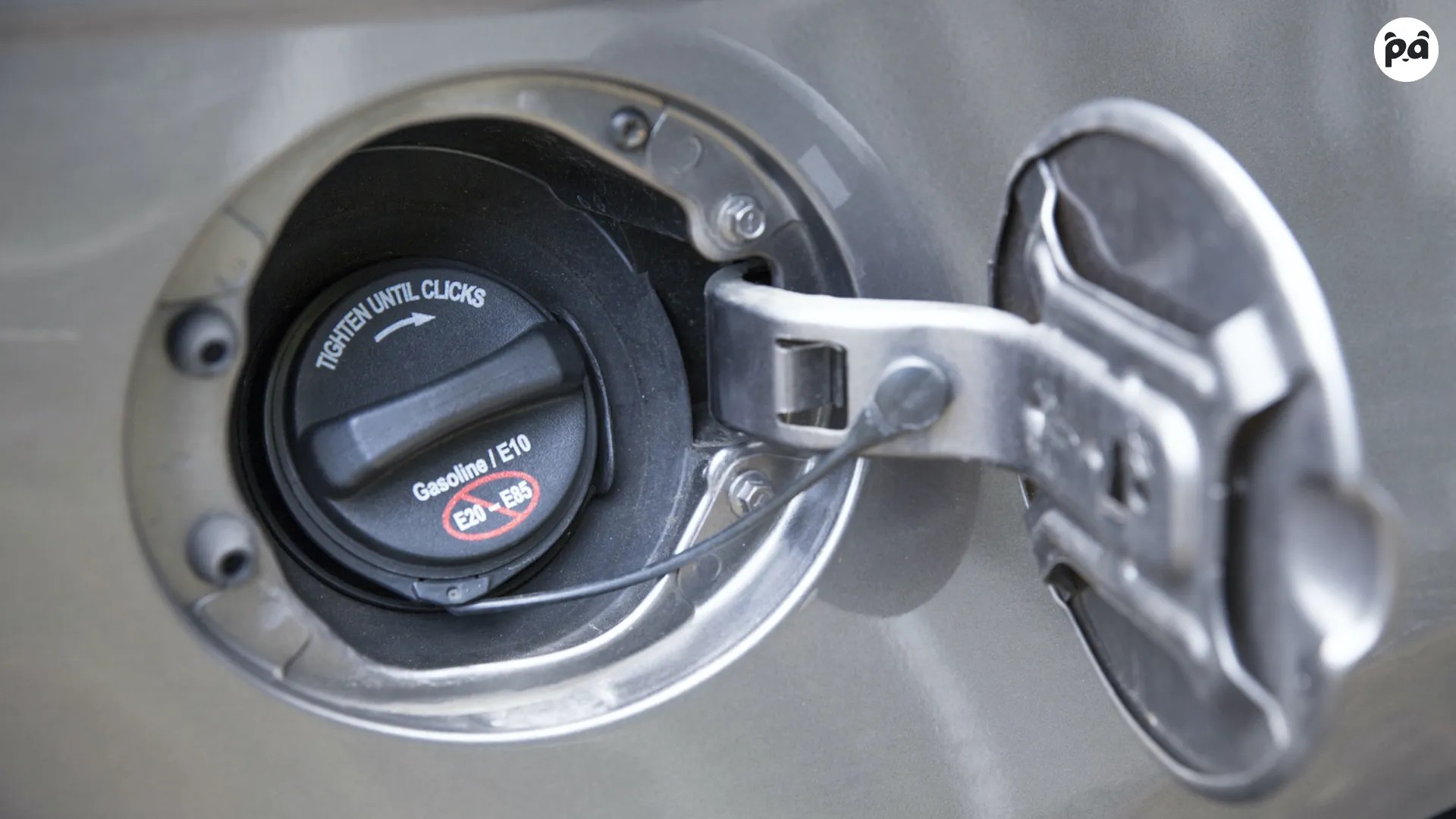Navigating the complexities of your vehicle’s dashboard can be daunting, especially when the check engine light illuminates. Among the myriad of diagnostic trouble codes (DTCs) that can trigger this warning, the P0455 code is a common yet often misunderstood issue. If your OBD-II scanner is displaying a P0455 code, it’s signaling a problem within your car’s Evaporative Emission Control System (EVAP). This article serves as your expert guide to understanding what the P0455 code signifies, its potential symptoms, root causes, and effective solutions to get your vehicle running smoothly and efficiently again.
Decoding the P0455 Code: EVAP System Large Leak Detected
The P0455 code is triggered when your vehicle’s computer, known as the Engine Control Unit (ECU) or Powertrain Control Module (PCM), detects a significant leak in the EVAP system. But what does P0455 code mean in practical terms for your vehicle’s operation and the environment? Essentially, it indicates that the system designed to prevent harmful fuel vapors from escaping into the atmosphere is compromised.
Why is the EVAP System Important?
The EVAP system plays a crucial role in both vehicle performance and environmental protection. It’s designed to capture fuel vapors that naturally evaporate from the fuel tank. Instead of releasing these hydrocarbon emissions into the air, the EVAP system safely stores them and then purges them into the engine to be burned during normal combustion. This process not only reduces air pollution but also improves fuel efficiency.
The Consequences of a P0455 Code
Ignoring a P0455 code can lead to several negative consequences:
- Environmental Impact: Uncontrolled release of fuel vapors contributes to smog and air pollution, violating environmental regulations in many regions.
- Fuel Efficiency Reduction: A leak in the EVAP system can lead to fuel evaporation, meaning you’re losing fuel and getting fewer miles per gallon.
- Potential Vehicle Performance Issues: In some cases, a large EVAP leak can affect engine performance, leading to rough idling or difficulty starting.
Common Symptoms Associated with the P0455 Code
Beyond the illuminated check engine light, several symptoms can accompany the P0455 code, alerting you to a potential EVAP system leak:
- Check Engine Light: This is the most immediate and obvious symptom. The check engine light will illuminate on your dashboard to signal a detected issue.
- Fuel Odor: You might notice a distinct smell of gasoline, especially around the fuel tank or filler cap area. This is a strong indicator of escaping fuel vapors.
- Decreased Fuel Economy: As fuel vapors escape, your vehicle becomes less fuel-efficient, leading to more frequent gas station visits.
- Difficulty Starting: In some instances, a large leak can cause issues with the fuel-air mixture, making it harder to start the engine, or resulting in occasional stalling.
Uncovering the Root Causes of P0455
To effectively address the P0455 code, it’s crucial to identify the underlying cause. Several factors can lead to a large leak in the EVAP system:
- Loose or Damaged Gas Cap: The most frequent and simplest cause is a gas cap that isn’t tightened properly, or is cracked, or has a worn-out seal. The gas cap is vital for sealing the fuel system and maintaining pressure.
- Faulty Purge Valve or Vent Valve: These valves control the flow of fuel vapors within the EVAP system. If they malfunction or become stuck open, they can create a leak.
- Cracked or Disconnected EVAP Hoses and Lines: The EVAP system uses a network of hoses and lines to transport fuel vapors. These can become brittle, cracked, or disconnected over time due to age or damage.
- Charcoal Canister Issues: The charcoal canister stores fuel vapors until they are purged into the engine. If the canister is damaged or saturated, it can cause leaks.
- Fuel Tank Pressure Sensor Malfunction: This sensor monitors pressure within the fuel system. A faulty sensor can send incorrect readings, triggering the P0455 code even if a leak isn’t present.
- Filler Neck or Fuel Tank Leak: Although less common, leaks can occur in the fuel filler neck or the fuel tank itself due to corrosion or damage.
- Overfilling the Fuel Tank: Repeatedly overfilling your gas tank can force liquid fuel into the EVAP system, potentially damaging components and leading to leaks.
Diagnosing and Repairing the P0455 Code: A Step-by-Step Guide
Diagnosing the P0455 code involves a systematic approach to pinpoint the source of the EVAP leak. Here’s a step-by-step guide you can follow:
- Check the Gas Cap: Begin with the simplest step. Remove and reinstall your gas cap, ensuring it’s tightened until it clicks. Inspect the cap for any cracks or damage to the rubber seal. If it looks worn, consider replacing it.
- Visual Inspection of EVAP System Components: Carefully examine all visible EVAP system components in the engine bay and underneath the vehicle. Look for cracked or disconnected hoses, damaged lines, or any signs of physical damage to the charcoal canister or valves.
- Smoke Test: A smoke test is a highly effective method to detect EVAP leaks. A professional mechanic will introduce smoke into the EVAP system and observe where smoke escapes, indicating the location of the leak.
- Scan Tool Diagnostics: Use an OBD-II scanner to read the P0455 code and any other related codes. Some scanners can also perform EVAP system tests, such as leak tests or purge valve tests, to further isolate the issue.
- Component Testing: If visual inspection and smoke tests are inconclusive, individual components like the purge valve, vent valve, and fuel tank pressure sensor may need to be tested using a multimeter or specialized tools to verify their functionality.
- Professional Assistance: If you are not comfortable performing these diagnostic steps or if the problem persists after your initial checks, it’s best to consult a certified mechanic. EVAP system repairs can sometimes be complex and require specialized knowledge and equipment.
Estimated Repair Costs for P0455
The cost to fix a P0455 code can vary significantly depending on the cause of the problem:
- Gas Cap Replacement: A new gas cap is typically inexpensive, ranging from $20 to $50. This is often the cheapest and easiest fix.
- EVAP Hose or Line Repair: Replacing a cracked hose or line can cost between $50 and $200, including parts and labor.
- Purge Valve or Vent Valve Replacement: Replacing a faulty valve can range from $100 to $300, depending on the vehicle make and model and labor costs.
- Charcoal Canister Replacement: Replacing the charcoal canister is a more expensive repair, potentially costing between $300 and $600 or more, including parts and labor.
- Smoke Test and Diagnostics: A professional smoke test and diagnostic labor can range from $80 to $150.
Driving with a P0455 Code: Is it Safe?
While driving with a P0455 code is generally considered safe in terms of immediate vehicle operation, it’s not advisable to ignore it long-term. The primary concerns are environmental impact and potential fuel wastage. However, if the code is accompanied by symptoms like strong fuel odors or engine performance issues, it’s best to have your vehicle inspected and repaired as soon as possible.
Conclusion: Addressing the P0455 Code Effectively
Encountering a P0455 code can be initially concerning, but understanding what does P0455 code mean and its common causes empowers you to take informed action. By following a systematic diagnostic approach, starting with simple checks like the gas cap and progressing to more detailed inspections and professional tests, you can effectively identify and resolve the EVAP system leak. Promptly addressing this issue not only clears your check engine light but also contributes to a cleaner environment and ensures your vehicle operates at its optimal fuel efficiency.
Frequently Asked Questions About P0455
Q: Can a loose gas cap cause a P0455 code?
A: Yes, a loose, damaged, or improperly sealed gas cap is one of the most common causes of a P0455 code.
Q: Will the P0455 code clear itself?
A: If the underlying issue is minor and intermittent, such as a slightly loose gas cap that is then tightened, the P0455 code might clear itself after a few drive cycles. However, it’s always best to diagnose and repair the root cause to prevent recurrence.
Q: Can I fix a P0455 code myself?
A: Simple issues like a loose gas cap can be easily fixed. Visual inspections of hoses and lines can also be performed by a car owner. However, more complex diagnoses and repairs, such as smoke tests or component replacements, often require professional expertise.
Q: Is P0455 a serious problem?
A: While P0455 is not typically indicative of a critical engine problem that will immediately stop your car from running, it should be addressed promptly. Long-term neglect can lead to increased emissions, reduced fuel economy, and potential damage to EVAP system components.


